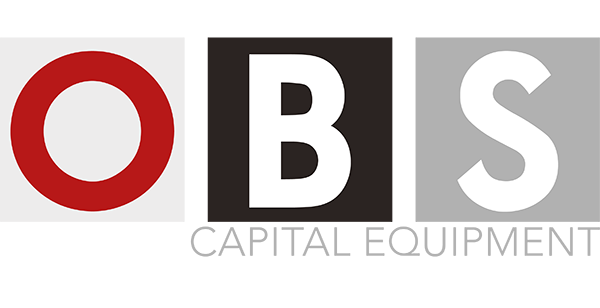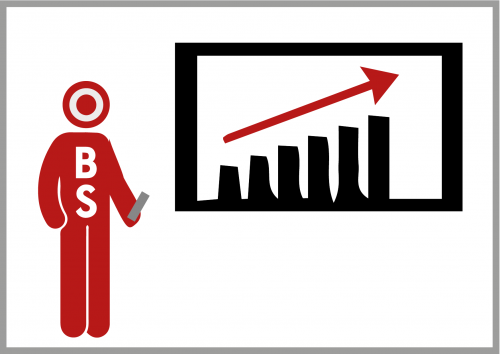Some recent data concluded that up to 75% of formal sales presentations lead prospects to feel the salesperson didn’t understand their needs.
In this report, Objective Based Selling helps MHE and capital equipment salespeople develop their skills and knowledge in formal presenting, broken down into 6 key areas:
- Preparation
- Starting a Presentation
- The Agenda and Slide Transition
- Ending a Presentation
- What To Do & What Not To Do
- Key Takeaway
1. PREPARATION
- Structure your presentation slides (item 3 below) in line with how you would present an Objective Based Selling written proposal
- Bring as much supporting material as you can such as brochures, case studies, samples, data analysis & proposal documents. Only distribute if required
- Check that you are bringing all the required equipment such as your PC or MAC, VGA to HDMI converter, power cord, slide mover, laser pointer, projector & spare presentation on a memory stick
- Test all the equipment to check that it is in good working order
- Give attention to your attire and personal grooming
- Arrive at your venue in good time, a minimum of one hour early, for setting up and testing
2. STARTING A PRESENTATION
Prior to starting your presentation, don’t hand out the PPP, proposal or brochures. Note paper, preferably with a branded pen, is ideal. Your first slide should show the AGENDA. Display this while doing your introductions.
THE HOOK – This is a short compelling story or statistic that clearly demonstrates that you understand what they want to achieve with this project.
SELF INTRO & PREVIEW – 1 or 2 interesting things about you or your company followed by an overview of the agenda slide. Tell them how long you will take to cover how your proposed solution will add value and meet their objectives.
3. THE AGENDA & SLIDE TRANSITION
Many salespeople start a formal presentation indulgently chatting about how wonderful their company is; how long they have traded; how many service engineers they have; service response time; fleet size; amazing company KPIs etc. While these issues are important (as Proposal Support), you primarily need to focus on how, through the project work you have done, you completely understand your customer’s needs and that your product or solution meets and exceeds those needs. For MHE and capital equipment projects, Objective Based Selling recommends the AGENDA and Presentation flow below:
- Project background
- Company Objectives
- Key Parameters
- Supplier recommendations and customer benefits (including alternatives)
- Bill of Materials and Investment Profile
- Proposal Support
SLIDE NAVIGATION – As you navigate through the topics, refer back to a continuously updated agenda slide, with previous items marked as completed. Participants appreciate knowing which point they are at in a presentation and an updated agenda slide acts as a transition road map.
For more on Objective Based Selling written proposals, that sell when you can’t be there, CLICK HERE
4. ENDING A PRESENTATION
This is just a guide and not set in stone, but we recommend:
- Time permitting, tell them a short, compelling, story that relates to this project. This is normally a similar project, with a customer they may recognise, where your solution added real value (this can also be covered in the Proposal Support section in the form of case studies).
- Make a power statement, sometimes called Key Takeaways, that crystallises why your solution meets the customer’s needs. You can use a final slide summarising your solution and the value it brings, then say “for all the reasons we have just reviewed together, I am confident that this solution will bring you that value!”
- MHE and capital equipment projects can be complex, with multiple decision influencers and competitor bids. As such, it’s unusual to be awarded the contract immediately after your presentation. Therefore, in order to maintain momentum with the project, it is good practice to establish what further actions are required by asking a simple question such as “what are the next steps in this project?” or “can we allocate some time tomorrow to review next steps in this project?”
5. WHAT TO DO & WHAT NOT TO DO
Let’s cover WHAT TO DO first
- Put much thought and planning into these events. If you do you will outperform your competitors because many competitors don’t do this
- Smile and make eye contact almost all the way through the talk
- Use small subtle postures and gestures and no uncontrolled movements
- Cut down on the coffee prior to your talk. It de-hydrates and if you are only 5% dehydrated it can compromise your performance by up to 20%
- Pause after delivering an important piece of information. This gives the audience time to absorb the information plus they get a short rest from your voice
- If the project has a name, add it to your agenda slides, top left or right. If your customer has a branded logo, add it to every slide in the bottom left or right
- Phone your principal contact, your Champion, before your presentation and ask “have there been any significant project changes since we last spoke?” If so, you’ll be prepared for these last-minute changes plus you signal that you are really plugged into this project, which will garner trust
Now let’s cover WHAT NOT TO DO
- Don’t ever deliver a sales presentation until you completely understand your customer’s needs and how your solution meets those needs in full
- With the previous point in mind, that you fully understand your customer’s needs and objectives, don’t oversell yourself by talking about features they don’t need
- You need to keep your audience engaged throughout your talk. A good way to keep them engaged is to not speak continuously without interruption for more than 1 minute. OBS recommends using Feedback Loops where you ask the audience, or a specific person, questions such as “Does that make sense?”, “Have I got that correct Amanda?”, “Is this information still accurate Stephen?” or “Would it help if I expand on this important issue?” If at any point you notice your audience is disengaged, maybe they are looking away, looking at their watches, not asking questions or even yawning, then you are losing them and you need to STOP. Again, use Feedback Loops to re-engage them by asking a question such as “I’m starting to get a sense that I’m off track so help me out. Have I missed something here?”
- Don’t ramble on or get long-winded with lots of detail
- Don’t clutter your notes with too much detail; you’ll get lost
- Don’t use complex slides with too much writing. Use headings, no more than 3 or 4 bullet points & pictures
- Don’t speak too softly or with fillers like “um, err, ah, you know…”
6. TAKEAWAY
- Many projects are won and lost during sales presentations, so make time to plan and prepare. Then plan and prepare some more. In doing so, you out-perform your competitors
- You sell more MHE or capital equipment by focusing on the customer instead of the stuff!
DOWNLOAD THE FULL ARTICLE AND MORE HERE.

